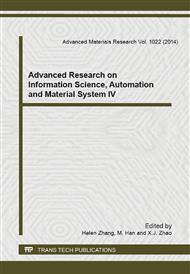[1]
S. Liu, J. H. Yang, Z. Y. Gan, X. B. Luo, Structural optimization of a microjet based cooling system for high power LEDs, International Journal of Thermal Sciences, vol. 27, pp.1086-1095, (2008).
DOI: 10.1016/j.ijthermalsci.2007.09.005
Google Scholar
[2]
X. B. Luo, Y. L. Liu, W. Liu, A honeycomb micro channel cooling system for electronics cooling, Heat Transfer Engineering, vol. 32(7-8), (2011).
Google Scholar
[3]
A. Bejan, Entropy generation through heat and fluid flow, New York: Wiley, (1982).
Google Scholar
[4]
A. Bejan, Entropy generation minimization, Orlando, FL: CRC, (1996).
Google Scholar
[5]
J. R. Culham, M. M. Yovanovich, and S. Lee, Thermal modeling of isothermal cuboids and rectangular heat sinks cooled by natural convection, IEEE Transactions on Components, Packaging, and Manufacturing Technology A, vol. 18, no. 3, pp.559-566, (1995).
DOI: 10.1109/95.465153
Google Scholar
[6]
M. Iyengar, A. Bar-Cohen, Least-energy optimization of forced convection plate fin heat sinks. IEEE Transactions of Components and Packaging Technology, vol. 26, pp.62-70, (2003).
DOI: 10.1109/tcapt.2003.811484
Google Scholar
[7]
T. Chen, and H. I. Chen, Multi-objective optimization design of plate-fin heat sinks using a direction-based genetic algorithm, Journal of the Taiwan Institute of Chemical Engineers, vol. 44, pp.257-265, (2013).
DOI: 10.1016/j.jtice.2012.11.012
Google Scholar
[8]
A. Bejan, Advanced Engineering Thermodynamics, New York: Wiley, (1998).
Google Scholar
[9]
Z. Y. Guo, H. Y. Zhu, and X. G. Liang, Entransy – A physical quantity describing heat transfer ability, International Journal of Heat and Mass Transfer, vol. 50, pp.2545-2556, (2007).
DOI: 10.1016/j.ijheatmasstransfer.2006.11.034
Google Scholar
[10]
Q. Chen, X. G. Liang, and Z. Y. Guo, Entransy theory for optimization of heat transfer – A review and update, International Journal of Heat and Mass Transfer, vol. 63, pp.65-81, (2013).
DOI: 10.1016/j.ijheatmasstransfer.2013.03.019
Google Scholar
[11]
X. T. Cheng, Q. Z. Zhang, X. H. Xu, and X. G. Liang, Optimization of fin geometry in heat convection with entransy theory, Chinese Physics B, vol. 22, no. 2, p.020503, (2013).
DOI: 10.1088/1674-1056/22/2/020503
Google Scholar
[12]
J. Moghaddam, and S. Saedodin, Entropy generation minimization of pin fin heat sinks by means of mataheuristic methods, Indian Journal of Science and Technology, vol. 6(7), pp.4886-4893, (2013).
DOI: 10.17485/ijst/2013/v6i7.13
Google Scholar
[13]
M. M. Yovanovich, and K. Jafarpur, Models of laminar natural convection from vertical and horizontal isothermal cuboids for all Prandtl number and all Rayleigh numbers below 1011, ASME Winter Annual Meeting, New Orleans, Louisianna, (1993).
DOI: 10.2514/6.1993-2750
Google Scholar
[14]
J. R. Culham, and Y. S. Muzychka, Optimization of plate fin heat sinks using entropy generation minimization, IEEE Transactions on Components and Packaging Technologies, vol. 24, no. 2, pp.159-165, (2001).
DOI: 10.1109/6144.926378
Google Scholar
[15]
S. Kirkpatrick, C. D. Gelatt, and M. P. Vecchi, Optimization by simulated annealing, Science, vol. 220, no. 4598, pp.671-680, (1983).
DOI: 10.1126/science.220.4598.671
Google Scholar


